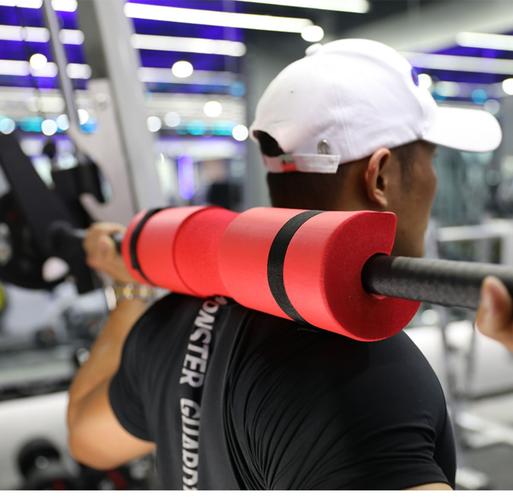In most gyms, there is a common sight nearby the squat rack – a cylindrical pad designed to provide cushion and comfort during squats. However, relying on a barbell pad for squats may inhibit muscle development and hinder overall strength gains. In this article, we will explore the disadvantages of using a barbell pad and present alternative techniques that can help achieve optimal squat performance.
Disadvantages of using a barbell pad:
While the intention behind using a barbell pad is to reduce discomfort, it comes with a set of disadvantages that can impact an individual’s squatting progress.
1. Instability: Placing a barbell across the shoulders without a pad forces the lifter to engage their core muscles, enhancing stability and balance. In contrast, the use of a barbell pad can create an unstable position, resulting in less efficiency during the exercise.
2. Reduced Range of Motion (ROM): Using a thick barbell pad can prevent the lifter from achieving a full range of motion during squats. Restricting the range of motion translates to less muscle activation, limiting the exercise’s effectiveness.
3. Technique Compensation: The soft padding of a barbell pad may lead lifters to unknowingly compensate their form by leaning forward or placing excessive pressure on their wrists. This compensatory technique can jeopardize the integrity of the squat movement and increase the risk of injury.
4. Lack of Real-World Applications: In general, the use of a barbell pad is unnecessary outside of the gym setting. Sports or occupations requiring strength and stability rarely provide comfort measures, making it essential to develop strength without relying on additional equipment.
Alternative techniques for optimal squats:
1. Proper Technique and Form: Strengthening your squat requires a focus on proper technique and form. This means keeping the barbell centered on the upper back, engaging the core, maintaining a neutral spine, and ensuring the knees align with the toes. Strengthening these fundamental aspects will improve the efficiency and effectiveness of your squats.
2. Gradual Progression: If discomfort is the primary reason for using a barbell pad, it is essential to progress gradually as you increase weight. By incrementally adding weight to your squat routine, your body will adapt, enabling you to build muscle and strength without relying on external aids.
3. Strengthening The Target Muscles: Incorporate exercises targeting the muscles used during squats to improve your overall lifting capacity. Focusing on leg exercises such as lunges, step-ups, and Bulgarian split squats can help strengthen the quadriceps, hamstrings, and glutes and enhance squat performance.
4. Opt for Dumbbells or Front Squats: If the discomfort persists, consider using dumbbells or trying front squats instead of traditional back squats. This alternative can reduce the pressure on your back, potentially eliminating the need for a barbell pad.
5. Consult with a Professional Trainer: If you are struggling to perform squats without a pad and unsure of proper technique, it is advisable to seek guidance from a qualified personal trainer. They can assess your form, identify any weaknesses or imbalances, and provide tailored advice to improve your squat performance.
Contact us for wholesale barbell pads!
Post time: Aug-05-2023

